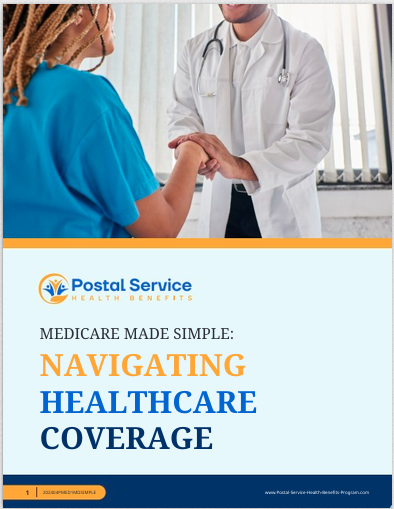Key Takeaways
- Postal Service health benefits are becoming increasingly critical for retirees, especially as new regulations and changes are set to take effect in 2025.
- Understanding your health coverage options now will help ensure a smoother transition and better preparedness for the upcoming shifts in benefits.
Here’s Why Your Postal Service Health Benefits Matter More as 2025 Nears
As the year 2025 approaches, significant changes in healthcare benefits for Postal Service employees are on the horizon. These changes stem from the Postal Service Reform Act of 2022, which aims to address long-standing issues in the U.S. Postal Service (USPS), including its financial challenges and the sustainability of its health benefits program. For current employees, retirees, and those nearing retirement, understanding these changes is crucial to making informed decisions about their health coverage.
The Impact of the Postal Service Reform Act of 2022
The Postal Service Reform Act of 2022 is a landmark legislation designed to modernize and improve the financial footing of the USPS. One of the most significant aspects of the act is the introduction of the Postal Service Health Benefits (PSHB) program, which will replace the Federal Employees Health Benefits (FEHB) program for Postal Service employees and retirees.
Starting in 2025, all postal employees and retirees will transition to the PSHB program. This change is particularly important because it marks a shift in how health benefits are managed and provided. The new program is intended to offer similar benefits to the FEHB, but with a few critical differences that could impact coverage and costs.
What Are Postal Service Health Benefits (PSHB)?
The Postal Service Health Benefits program is a new health insurance plan specifically designed for postal employees and retirees. The PSHB will be managed separately from the FEHB program, which currently covers a wide range of federal employees. One of the key differences with PSHB is its mandatory enrollment for all postal retirees who are eligible for Medicare.
This mandatory enrollment means that retirees will need to sign up for Medicare Part B (which covers outpatient care, preventive services, ambulance services, and durable medical equipment) as a condition for staying in the PSHB program. While this may seem like an added burden, it’s important to understand the reasons behind this requirement.
Why Is Medicare Part B Enrollment Required?
Medicare Part B enrollment is being required for postal retirees under the PSHB program to help reduce overall healthcare costs for both the USPS and its retirees. By requiring Medicare-eligible retirees to enroll in Part B, the PSHB program can coordinate benefits with Medicare, effectively lowering the out-of-pocket costs for retirees. This coordination can lead to significant savings on medical expenses, making healthcare more affordable for retirees.
Moreover, the mandatory enrollment in Medicare Part B ensures that retirees have comprehensive coverage, as Medicare Part B covers many services that are not fully covered under other parts of Medicare or private insurance plans. This comprehensive coverage is particularly important as healthcare needs typically increase with age.
How Will the PSHB Program Affect Current Employees?
For current USPS employees, the transition to the PSHB program represents a change in their future retirement planning. While the benefits under the PSHB program are expected to be similar to those offered under the FEHB, employees need to be aware of the new Medicare Part B requirement and its potential impact on their retirement benefits.
Employees nearing retirement should start planning now to ensure they understand their options and are prepared for the changes. This planning might include assessing the costs of Medicare Part B, understanding how their health coverage will change, and considering any supplemental insurance that may be needed.
The Importance of Understanding Your Benefits Now
Given the upcoming changes, it’s more important than ever for Postal Service employees and retirees to have a clear understanding of their health benefits. With the transition to the PSHB program set for 2025, now is the time to review your current coverage, learn about the new program, and make any necessary adjustments to your retirement plans.
For retirees, this may mean evaluating the costs and benefits of enrolling in Medicare Part B and understanding how the PSHB program will coordinate with Medicare to provide comprehensive coverage. For current employees, it’s essential to understand how these changes might affect your future retirement plans and what steps you need to take to ensure you’re fully covered when the time comes.
What Should Retirees Do to Prepare for 2025?
If you’re a USPS retiree or nearing retirement, there are several steps you can take to prepare for the transition to the PSHB program in 2025. First, make sure you understand your current health coverage under the FEHB program and how it compares to the PSHB program. This includes reviewing your plan options, costs, and coverage details.
Next, if you’re eligible for Medicare, start planning for your enrollment in Medicare Part B. This includes understanding the costs of Part B premiums and how these costs will impact your overall healthcare budget. Keep in mind that while Part B premiums may add to your monthly expenses, the coordination of benefits between Medicare and the PSHB program could lead to overall savings on medical costs.
It’s also a good idea to consult with a licensed insurance agent who specializes in Medicare and federal employee benefits. They can provide personalized advice and help you navigate the complexities of the new PSHB program, ensuring that you’re making the best decisions for your health and financial well-being.
What Happens If You Don’t Enroll in Medicare Part B?
One of the most critical aspects of the new PSHB program is the requirement for Medicare-eligible retirees to enroll in Medicare Part B. Failing to enroll in Part B could result in losing your PSHB coverage, which would leave you without comprehensive health insurance. This could lead to significant out-of-pocket expenses for medical care, particularly as you age and your healthcare needs increase.
To avoid this scenario, it’s essential to understand the enrollment process for Medicare Part B and to ensure that you meet all the necessary deadlines. If you’re already retired and approaching Medicare eligibility, you’ll need to enroll in Part B during your Initial Enrollment Period (IEP), which begins three months before you turn 65 and ends three months after your 65th birthday.
For those already enrolled in Medicare Part B, the transition to the PSHB program should be relatively smooth. However, it’s still important to review your coverage and make sure that all your healthcare needs will be met under the new program.
The Financial Implications of the PSHB Program
The introduction of the PSHB program is also expected to have financial implications for both the USPS and its retirees. By requiring Medicare Part B enrollment, the USPS aims to reduce its overall healthcare costs, which have been a significant financial burden on the organization. For retirees, this could translate into lower out-of-pocket costs for medical care, as the coordination of benefits between Medicare and the PSHB program is designed to provide more comprehensive coverage.
However, retirees should also be aware of the potential increase in their healthcare expenses due to the Part B premiums. While the exact financial impact will vary depending on individual circumstances, it’s important to factor these costs into your retirement planning and to explore options for managing your healthcare expenses effectively.
Will the PSHB Program Affect Survivor Benefits?
Another important consideration for Postal Service employees and retirees is how the PSHB program will affect survivor benefits. Under the current FEHB program, surviving spouses and eligible family members can continue to receive health benefits after the death of the employee or retiree. It’s expected that the PSHB program will offer similar protections, but it’s important to verify these details as the program is implemented.
If you have a spouse or dependents who rely on your health coverage, make sure to review how the PSHB program will handle survivor benefits and what steps you need to take to ensure they remain covered. This might include designating a survivor annuitant or updating your benefits to reflect any changes in your family situation.
Preparing for the Future: Steps to Take Now
As the 2025 deadline approaches, it’s essential for Postal Service employees and retirees to take proactive steps to prepare for the changes in their health benefits. This includes staying informed about the new PSHB program, understanding the Medicare Part B enrollment requirements, and reviewing your current health coverage to ensure it meets your needs.
For retirees, this might involve consulting with a licensed insurance agent to discuss your options and to ensure that you’re fully prepared for the transition to the PSHB program. For current employees, it’s important to start thinking about your future retirement plans and how these changes might affect your long-term health coverage.
Looking Ahead to 2025 and Beyond
The introduction of the Postal Service Health Benefits program marks a significant change in how healthcare benefits are managed for USPS employees and retirees. While the transition may seem daunting, taking the time to understand the new program and to prepare for the changes can help ensure a smooth and successful transition.
By staying informed and proactive, you can protect your health and financial well-being as you navigate the evolving landscape of postal service health benefits. Whether you’re a current employee or a retiree, understanding your options and planning for the future will be key to making the most of your health coverage as 2025 approaches.
A Smooth Transition for a Secure Future
As the deadline for the transition to the Postal Service Health Benefits program nears, it’s crucial to remain vigilant and well-prepared. The changes brought by the Postal Service Reform Act of 2022 may seem overwhelming, but with the right knowledge and proactive steps, you can ensure that you and your loved ones are well-covered and secure in your healthcare needs. Remember, taking the time to understand your benefits today can lead to a healthier, more financially secure future.
Contact Information:
Email: [email protected]
Phone: 4123988889






